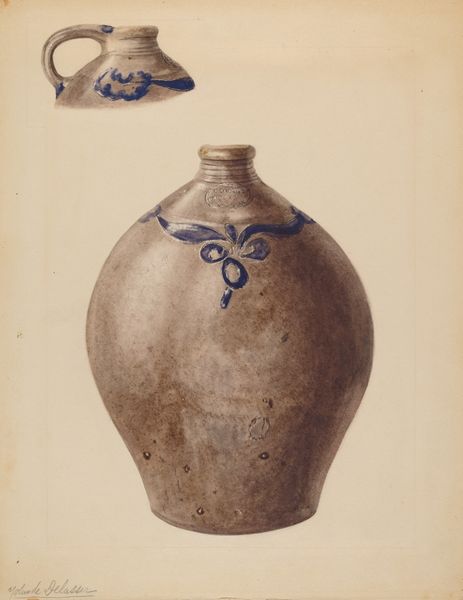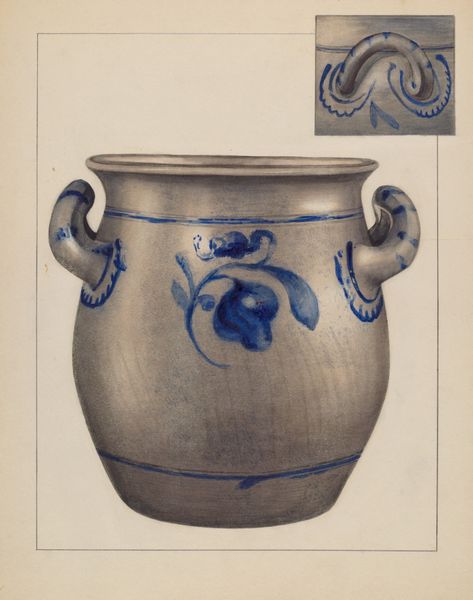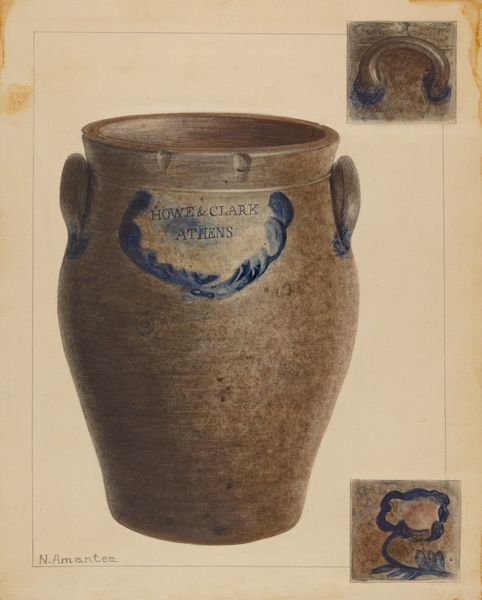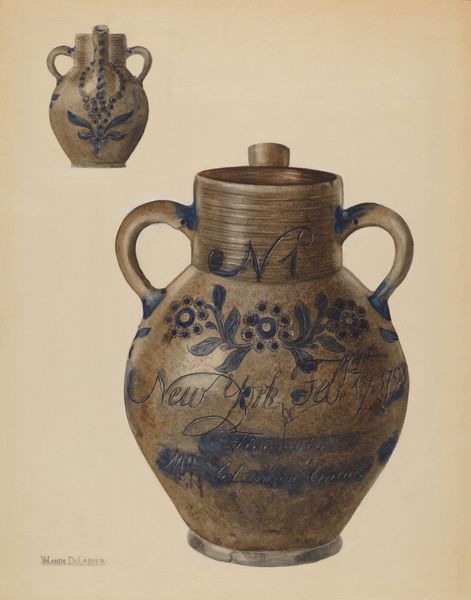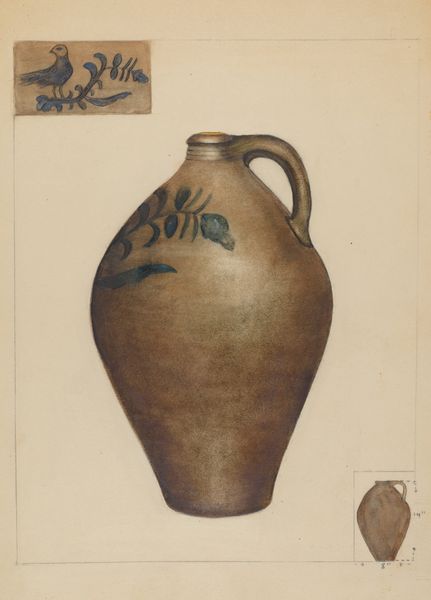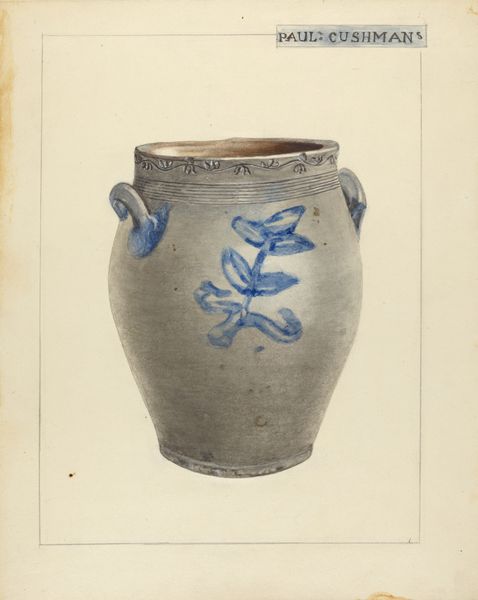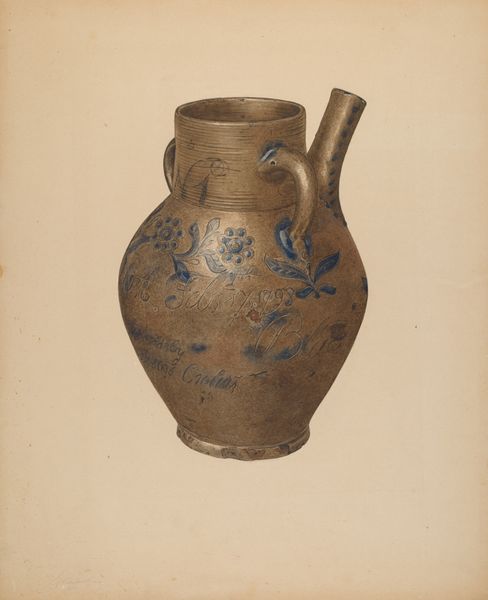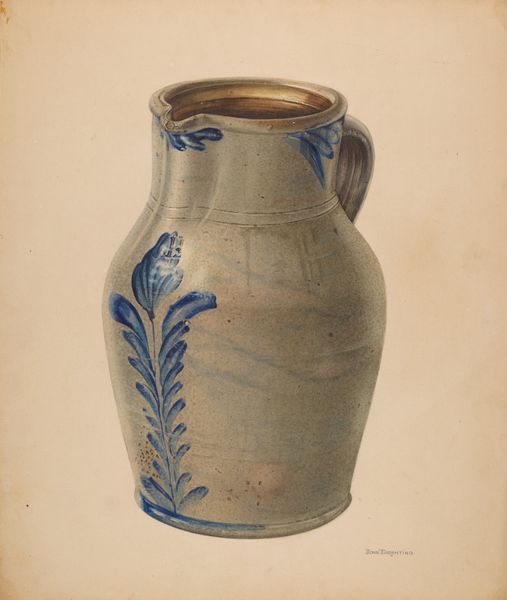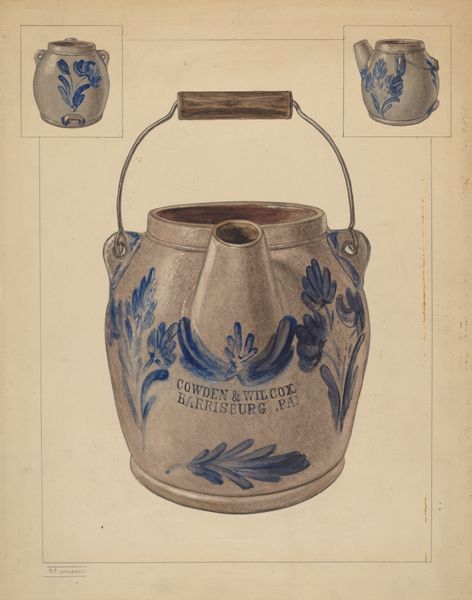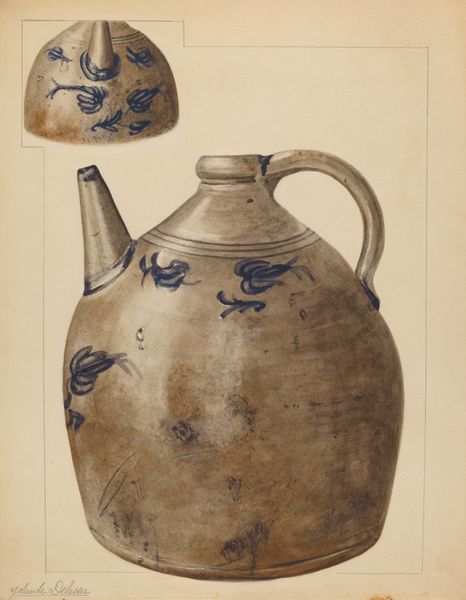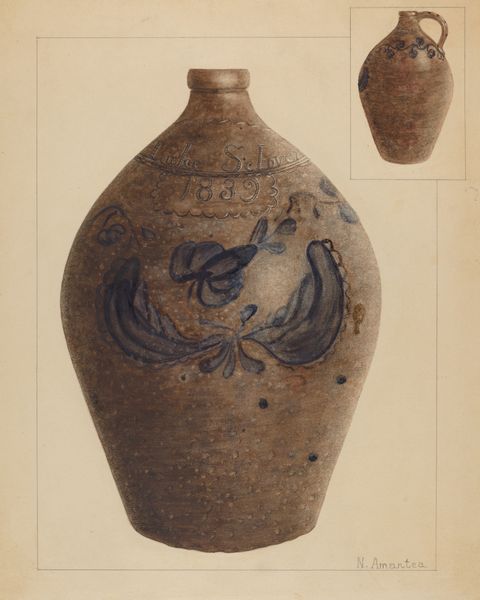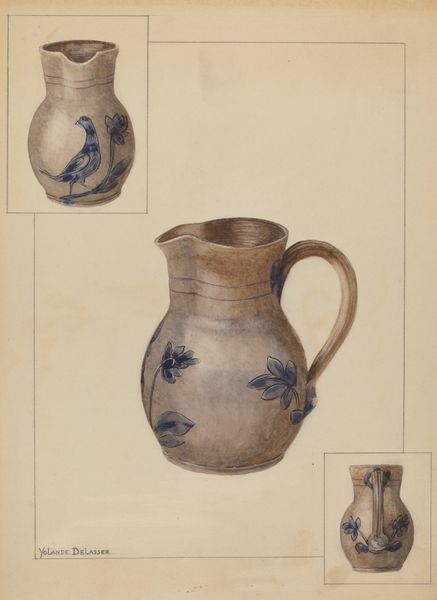
drawing, watercolor
#
drawing
#
watercolor
#
watercolour illustration
Dimensions: overall: 29.5 x 22.9 cm (11 5/8 x 9 in.) Original IAD Object: 13 3/4" High 6 1/2" Dia
Copyright: National Gallery of Art: CC0 1.0
Curator: This is Yolande Delasser's "Crock," created around 1936, a delicate watercolor and drawing. I am immediately struck by its muted palette. Editor: The subtle hues create a feeling of humble, quiet domesticity, as if glimpsing into a rustic farmhouse interior. Curator: Observe how Delasser uses varying shades of brown and blue to depict the textured surface of the pottery. It's a study of form and materiality through tonal variation. I wonder about the composition choice with these close views and careful attention paid to the detail of the handles and motifs? Editor: Considering the era, such "humble" domestic items were part of an Arts and Crafts tradition, one that romanticized the skills of rural Americans while promoting handcrafted and handmade artifacts in response to an increasingly industrial culture. The stylized bird on one vase, and the folk art floral pattern of another may highlight particular local and regional craft traditions, too. Curator: I concur. The composition here also draws attention to the surface detail, notice those hairline cracks, carefully rendered—it gives the stoneware an intimate character. I wonder, why stoneware, not some finer ware? Editor: Perhaps there's commentary, too. Though pretty, such utilitarian pieces speak to economic disparities during the Depression. What was once a common vessel has now been elevated, or immortalized. The work acknowledges labor through representing items of material culture related to labor—to food preservation, the cyclical act of providing for your family and community. The cracks tell stories of durability and reuse. Curator: Absolutely. Delasser transforms these mundane objects into artifacts worthy of contemplation and highlights form through rendering detail, surface and composition, giving quiet dignity to otherwise common place objects. Editor: The subtle political charge here—and in much folk art—resonates even now: honoring everyday acts, everyday items. We look to a more inclusive narrative, where folk and outsider art traditions contribute something new.
Comments
No comments
Be the first to comment and join the conversation on the ultimate creative platform.
